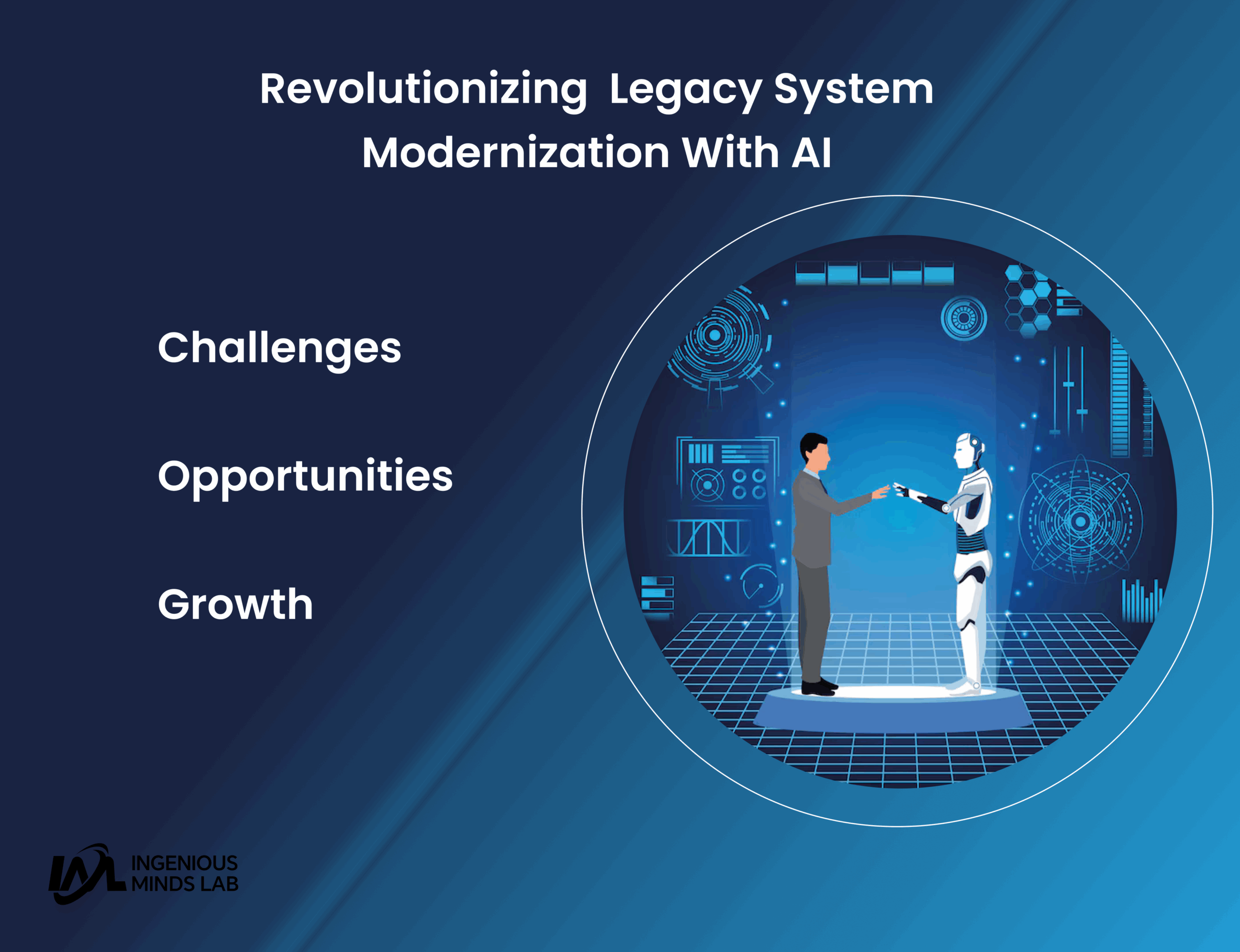66% of businesses still rely on legacy systems, putting themselves at risk in today’s digital-first economy. Legacy system modernization is no longer just a strategy for operational efficiency — it’s a necessity for survival. Outdated methods like manual code migration or basic ‘lift-and-shift’ approaches often drain budgets and stall returns.
But what if you could cut your modernization timeline by 40–60%?
Enter AI-driven legacy system modernization — a game-changing approach that accelerates transformation, reduces costs, and unlocks new growth opportunities. Let’s explore how AI can modernize your legacy systems and reshape your business future.
The Root of the Problem: Technical Debt
Legacy systems — many built two decades ago — remain the backbone of operations for roughly 70% of Fortune 500 companies. While they once offered a competitive edge, they now accumulate technical debt, which:
Increases maintenance costs
Limits scalability
Reduces flexibility for integrating new technologies
Organizations spend 23–42% of development time managing technical debt, which translates to $361,000 per 100,000 lines of code — a steep hidden cost that limits innovation and drains resources.
But the good news? You can still minimize future costs and modernize swiftly — without disrupting critical operations — by integrating AI into your modernization strategy.
What Is a Legacy System?
A legacy system is an outdated software application that continues to support critical business operations. Though reliable in their time, these systems struggle to meet today’s dynamic demands. For example, a 20-year-old banking system still processing millions of transactions daily — dependable, but difficult to scale, integrate, or secure.
Common Characteristics of Legacy Systems:
Obsolete technology stacks
High maintenance costs
Data silos
Limited scalability
Security vulnerabilities
Despite these issues, organizations often hesitate to modernize due to cost, complexity, and the risk of operational disruption.
How Legacy Systems Hold You Back
Outdated systems create technical debt, which acts as a hidden tax on your business. Key consequences include:
Slowed innovation and time-to-market
Difficulty integrating with modern tools and platforms
Compliance risks and higher regulatory costs
System instability and resiliency challenges
Consuming 70% of IT capacity on maintenance
Lower talent retention due to outdated tech environments
Clearly, modernization isn’t optional — but the way you modernize matters.
Where Traditional Approaches Fall Short
Legacy modernization has long relied on traditional methods like:
Lift-and-shift (migrating without re-architecting)
Incremental updates
Complete rewrites
However, these often:
Disrupt core operations
Involve high upfront investment
Follow rigid, one-size-fits-all models
Struggle with data integrity and compatibility
Depend on hard-to-find legacy skill sets
How AI Makes Modernization Smarter and Faster
AI doesn’t just fix legacy issues — it transforms them into strategic assets. Here’s how AI revolutionizes legacy system modernization:
1. Automated Code Analysis & Refactoring
AI can scan millions of lines of legacy code to:
Detect patterns, dead code, and security risks
Identify performance bottlenecks
Refactor code from COBOL or other outdated languages to Java, Python, etc.
Maintain business logic while upgrading codebases
2. Intelligent Data Migration
Data migration is often the most complex part. AI helps by:
Identifying and classifying sensitive data
Cleaning and transforming unstructured data
Ensuring compatibility with modern systems
3. Predictive Maintenance & Risk Mitigation
AI supports proactive modernization with:
Digital twins to simulate changes in a safe environment
Anomaly detection to catch issues early
Predictive analytics to schedule maintenance
Risk analysis to identify compliance or security gaps
4. Generative AI Agents
Generative AI can create autonomous agents that:
Analyze legacy code and extract business logic
Convert complex code into plain English
Refactor and translate code into modern languages
Handle testing, integration, and deployment tasks
Scale modernization across business functions
Result: 40–50% faster modernization, lower costs, and scalable improvements.
Challenges of AI-Driven Modernization
While promising, AI-driven modernization does come with challenges:
1. Data Quality & Accessibility
Legacy data is often fragmented and hard to process.
Solution: Use AI-powered data cleansing and phased migration focusing on high-value data.
2. Integration Complexity
Legacy systems are tightly coupled and fragile.
Solution: Implement AI middleware to act as a bridge, or adopt hybrid architectures where possible.
3. AI Talent Shortages
Few engineers understand both AI and legacy systems.
Solution: Hire hybrid-skilled professionals or invest in training and upskilling programs.
4. Ethical and Compliance Risks
Biased or outdated data can affect AI outcomes.
Solution: Audit training data and establish AI governance frameworks.
A Roadmap for AI-Powered Legacy Modernization
Step 1: Audit & Strategize
Identify critical systems and pain points
Set measurable goals (e.g., reduced downtime, improved performance)
Align with business objectives and secure leadership buy-in
Step 2: Prepare Data & Infrastructure
Use AI analytics to spot inefficiencies
Focus on high-impact systems for early gains
Step 3: Prioritize AI Use Cases
Automated code refactoring
Predictive maintenance
Smart data migration
Digital twin simulations
Step 4: Start with a Pilot Project
Choose a non-critical yet high-friction component
Use agile, iterative development
Track KPIs like performance gains, cost savings, and stability
Step 5: Scale Strategically
Gradually extend modernization across departments
Optimize and refine based on real-world insights
Conclusion: AI Isn’t the Future — It’s the Present
Modernizing legacy systems with AI isn’t just a technical upgrade — it’s a business transformation enabler. With the right strategy, tools, and people, your organization can:
Cut modernization time by half
Reduce technical debt
Innovate faster
Deliver more value to customers

